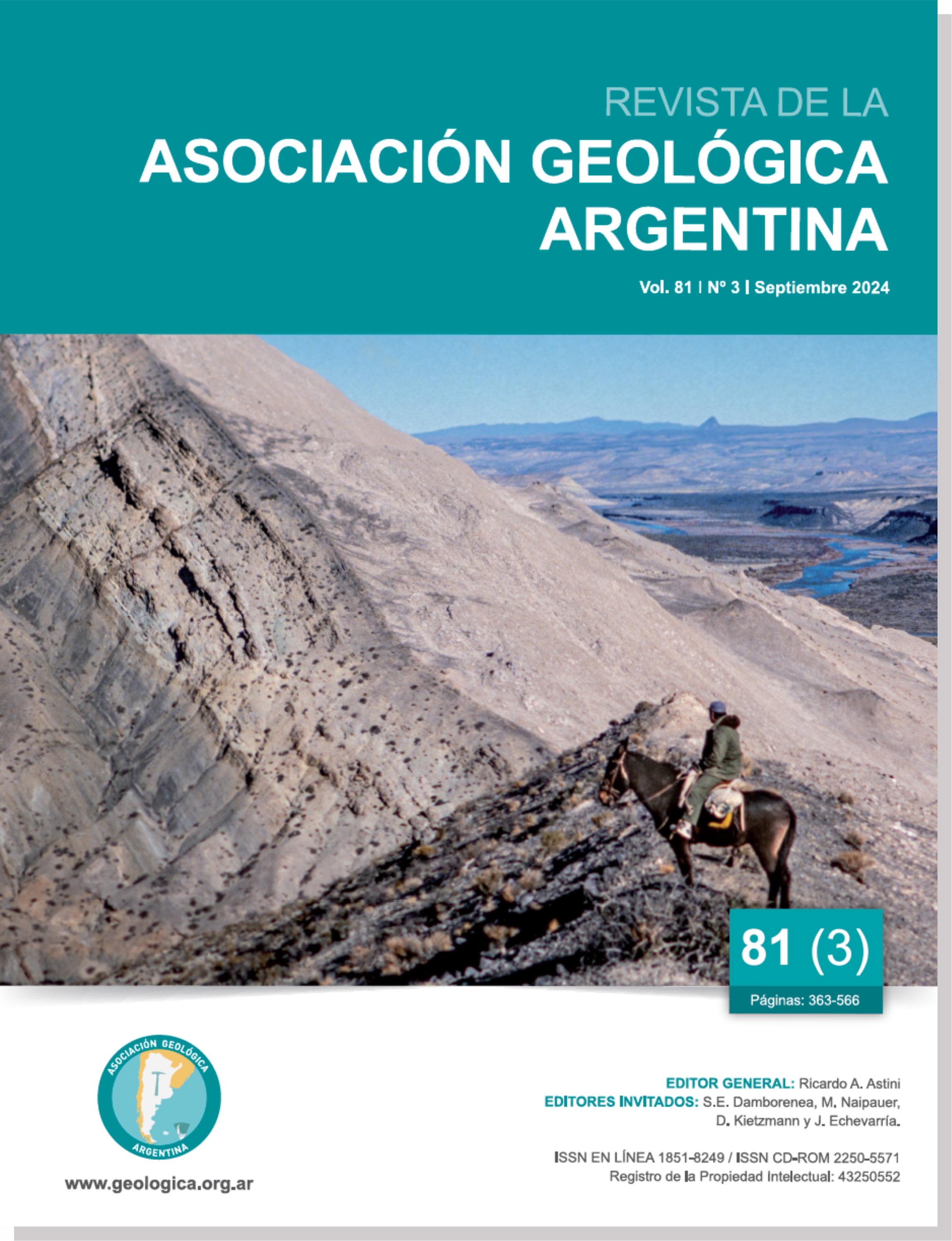The Jurassic lacustrine record of the subsurface of the Austral-Magellan Basin and its potential as a source rock for hydrocarbons.
Main Article Content
Abstract
The Austral Basin developed as the result of widespread Jurassic rift event that affected an igneous-metamorphic basement of Paleozoic age. During this process, several depocenters were developed and filled with clastic, volcanic and mixed nature sediments. The volcanic deposits originated during this event have been grouped by other authors in the Chon Aike Magmatic Province, which represents a large felsic LIP that can be recognized throughout all of Patagonia. Interdigitated within the volcanic rocks, some clastic continental deposits have
been documented, associated in many cases with swamps and/or lacustrine environments. These deposits have been poorly studied as possible source rocks for the hydrocarbons generated in the basin, so in this paper we present an integral study analyzing the oleogenetic potential of these rocks in a basin wide context. This contribution presents a lithological and geochemical characterization of cutting and drill-cores obtained from exploratory hydrocarbon wells, material that was preliminary assign to a good oleogenetic potential in the original well description files. This study also includes new, previously unpublished, material from other wells across the basin, including wells located in Chile and from the offshore sectors of the Argentinean Sea. Finally, descriptions of the fossil content found in one of the wells is reported, which constitute the first record of this kind for the subsurface of the basin. Results show that the studied rocks have good oleogenetic properties, with a strong terrigenous imprint and participation of high plants-derived material, denoting a lacustrine and/or swamp environment.
As for the reported fossil material, this represents the first mention of this kind of remains for this unit. They are mainly composed of unknown plant remains that are accompanied by typically continental invertebrates composed of crustaceans (Branchiopoda, Diplostraca) and other insect remains (Coleoptera). The identified Crustaceans, commonly known as “estherias” or “conchostracos” were preliminarily assigned to three different families (Palaeolimnadiopseiae, Fushograptidae and ?Eosestheriidae) similar to other South American findings. Finally, the insect remains (Coleoptera) are represented by two sets of elytra that can be assigned to two different families, one (Cupedidae) with a known record in some South American Triassic units and the other (Asiocoleidae) representing the first of this family for the Southern Hemisphere.
Article Details

This work is licensed under a Creative Commons Attribution-NonCommercial 4.0 International License.
Nota de copyright
Los autores conservan los derechos de autor y garantizan a la revista el derecho de ser la primera publicación del trabajo licenciado según una licencia de atribución Creative Commons que permite a otros compartir el trabajo con el reconocimiento de la autoría y de la publicación en la que se publicó por primera vez.
Declaración de privacidad
Los nombres y direcciones de correo electrónico introducidos en esta revista se usarán exclusivamente para los fines declarados por esta revista y no estarán disponibles para ningún otro propósito u otra persona.

